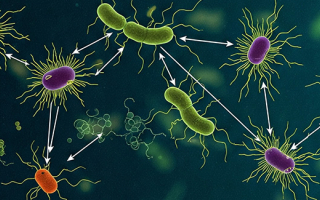Full Name
Joseph Vallino
Title
Senior Scientist

- Email:
- Phone:
- Fax:
- CV:
- ORCID ID:
0000-0002-4184-4512
M.S., Chemical Engineering, Caltech, 1985;
B.S., Chemical Engineering, UC Berkeley, 1983.
Dr. Joe Vallino’s research concerns ecosystem chemistry associated with biological growth and energy utilization that underlies the development of living systems. Since the majority of metabolic diversity lies almost entirely within microorganisms, his experimental work focuses on microbial communities (aka, microbiomes), which have the added benefit of fast characteristic timescales that can be studied in the lab. A question of interest concerns what governs the expression of metabolic function (such as photosynthesis, methanogenesis, nitrogen fixation, etc) that is orchestrated by the entire microbial consortium? Are the rates of ecosystem metabolic reactions governed by just happenstance depending on which organisms are present, or is the overall chemistry of the system determined by fundamental principles? Current theories in non-equilibrium thermodynamics support the conjecture that systems organize to maximize entropy production (MEP). Dr. Vallino is currently exploring how MEP can be used to describe microbial biogeochemistry using theoretical models tested against laboratory microbial microcosm experiments.
While microcosm experiments are useful for testing new theories, knowledge obtained from laboratory-based research is used to develop more robust biogeochemistry models that are coupled with 1D, 2D and 3D hydrodynamic models to describe how ecosystems organize over time and space to dissipate energy, as demonstrated in nearby Siders Pond. The Plum Island Ecosystems Long Term Ecological Research Program provides an excellent means to test new ideas and models derived from them, which are also being implemented in 3D global ocean biogeochemistry models. He also uses data assimilation techniques to calibrate and test models against observations and experiments from field-based research projects.


Vallino, J.J. and Tsakalakis, I. (2020) Phytoplankton temporal strategies increase entropy production in a marine food web model. Entropy, 22 (11), 1249, 25 pp., doi: 10.3390/e22111249.
Stewart, L.C., Algar, C.K., Fortunato, C.S., Larson, L., Vallino, J.J., Huber, J.A., Butterfield, D.A. and Holden, J.F. (2019) Metabolic activity and local hydrology define methanogen community size and composition in vents. ISME J, 13, 1711-1721, doi: 10.1038/s41396-019-0382-3.
Vallino, J.J. and Huber, J.A. (2018) Using maximum entropy production to describe microbial biogeochemistry over time and space in a meromictic pond. Frontiers in Environmental Science 6, 100, 22pp., doi: 10.3389/fenvs.2018.00100.
Fernandez-Gonzalez, N., Huber, J.A., Vallino, J.J. (2016) Microbial communities are well adapted to disturbances in energy input. mSystems 1 (5), 15 pp., doi: 10.1128/mSystems.00117-16.
Vallino, J.J. and Algar, C.K. (2016) Thermodynamics of Marine Biogeochemical Cycles: Lotka Revisited. Ann. Rev. Mar. Sci. 8, 333-356, doi: 10.1146/annurev-marine-010814-015843
Chapman, E.J., Childers, D.L. and Vallino, J.J. (2016) How The Second Law of Thermodynamics has informed ecosystem ecology through its history. BioScience 66 (1), 27-39, doi: 10.1093/biosci/biv166.
Algar, C.K. and Vallino, J.J. (2014) Predicting microbial nitrate reduction pathways in coastal sediments. Aquat.Microb.Ecol. 71 (3): 223-238, doi: 10.3354/ame01678
Vallino, J.J., Algar, C.K., Fernandez Gonzalez, N., Huber, J.A.. (2014) Use of receding horizon optimal control to solve MaxEP-based biogeochemistry problems. In Beyond the Second Law: Entropy Production and Non-Equilibrium Systems, Dewar, R.C., Lineweaver, C., Niven, R. and Regenauer-Lieb, K., (eds), Springer, pp 337-359, doi: 10.1007/978-3-642-40154-1_18.
Vallino, J.J. (2010) Ecosystem biogeochemistry considered as a distributed metabolic network ordered by maximum entropy production. Phil. Trans. R. Soc. B, 365, 1417-1427, doi:10.1098/rstb.2009.0272




